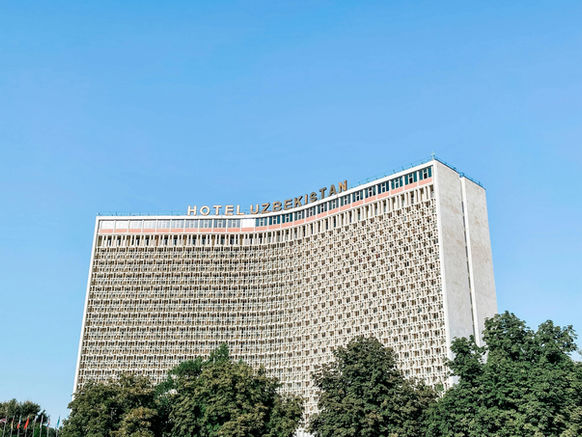Tashkent
Tashkent, the capital and largest city of Uzbekistan, is a vibrant and rapidly growing urban center that blends rich history with modernity. Located in the heart of Central Asia, Tashkent serves as the political, economic, cultural, and scientific hub of the country. With a population of over 2.5 million people, it is one of the most populous cities in the region.
Today, Tashkent is a bustling metropolis characterized by wide avenues, grandiose Soviet-era architecture, and a mix of contemporary structures. The city's growth has accelerated since Uzbekistan gained independence in 1991, and it continues to evolve with new infrastructural projects, international businesses, and cultural developments.

The history of Tashkent
Historical Significance:Tashkent’s history dates back over 2,000 years, with roots in the ancient Silk Road as a key trade route connecting the East and West. The city has witnessed the rise and fall of many civilizations, including the Persian Empire, the Turkic Khaganate, and the Soviet Union. Throughout the centuries, Tashkent has been a melting pot of various cultures, religions, and architectural styles.
During the Timurid Empire in the 14th century, Tashkent emerged as an important cultural and scientific center. In the 19th century, the Russian Empire took control of the region, and the city saw significant modernization, which continued under Soviet rule.
.jpg)
Khasti Imam a jewel of Tashkent
.jpg)
The Khasti Imam Complex, located in the heart of Tashkent, is one of Uzbekistan’s most significant religious and historical sites. Established in the 16th century, it is named after the renowned Islamic scholar Imam al-Bukhari.
The complex is a stunning example of Islamic architecture and serves as a center for religious education and worship.Key highlights include the Tilla Sheikh Mosque, with its intricate tilework and peaceful atmosphere, and the Barak Khan Madrasah, a 16th-century Islamic school still in use today. The complex is also home to a revered relic of Imam al-Bukhari, drawing both pilgrims and visitors.With its blend of history, spirituality, and architectural beauty, the Khasti Imam Complex is a must-visit destination for anyone interested in Uzbekistan’s rich cultural and religious heritage.
Tashkent Metro: A Modern Marvel of Central Asia
.jpg)
The Tashkent Metro, Uzbekistan’s first subway system, opened in 1977 and is a key part of the city’s public transport network. Known for its stunning architecture, each station is uniquely designed, blending Soviet-era grandeur with traditional Uzbek motifs. The metro not only provides efficient transportation but also serves as an underground museum, with marble columns, intricate mosaics, and beautiful tile work decorating many of its stations.
The system features three lines, covering most of Tashkent’s major areas, including the bustling city center and historical sites. The Tashkent Metro is one of the cleanest and most affordable metro systems in the world, offering both locals and tourists an easy way to explore the city. The metro also stands out for its punctuality and the comfort it offers passengers, making it a popular mode of travel for daily commuters.
While the Tashkent Metro's stations are functional, they also reflect the artistic and cultural heritage of Uzbekistan, with many stations featuring vibrant colors, elaborate frescoes, and sculptural elements. In addition, the metro system continues to expand, with new lines and stations planned to further improve connectivity throughout the city. Whether you're commuting or sightseeing, the Tashkent Metro is a must-experience part of the city's infrastructure, combining modern convenience with architectural elegance.
Chorsu Bazaar: The Heart of Tashkent’s Traditions
Chorsu Bazaar, one of the oldest and most vibrant markets in Tashkent, is a true cultural gem of Uzbekistan. Located in the city’s historic center, this bustling market has been a hub for trade and commerce for centuries, offering a unique glimpse into local life. The bazaar is housed under a large, blue-domed structure that is an iconic symbol of the city and a welcoming sight for visitors.At Chorsu Bazaar, you can find a wide array of goods, from fresh produce and spices to textiles, traditional crafts, and street food. It is a sensory experience, where the aroma of spices fills the air and colorful stalls display an impressive variety of local products, including dried fruits, nuts, herbs, and handmade goods.The market is not just a place to shop but also a vibrant social space, where locals gather to trade, share stories, and enjoy the sights and sounds of the city. For visitors, Chorsu Bazaar offers a chance to immerse themselves in Uzbek culture, taste local delicacies, and purchase unique souvenirs.Whether you're a local resident or a tourist, Chorsu Bazaar is a must-visit destination that captures the spirit of Tashkent and its rich history.








